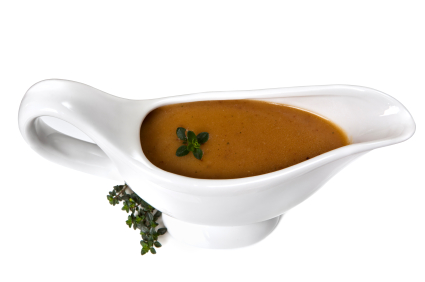
The addition of umami makes many foods taste better. As one of the five primary tastes, it can balance out the other flavors of salty, sweet, bitter, and sour. And, the savory meaty flavor of umami keeps food from tasting flat and bland.
Umami can be added to dishes through the use of umami-rich ingredients or MSG seasoning, which is the purest form of umami. Meats, soups, stews, casseroles, and vegetables are perfect candidates for bumping up the umami. But there are a few dishes that really shine with the addition of umami.
Vegetable (or really any type of) Soup
Adding umami works well in almost any type of soup, stew, stock, or broth. Vegetable based soups can especially benefit from the boost of umami because it will give them a meatier flavor without having to actually add meat. Umami can be added through both MSG and savory ingredients like miso, mushrooms, or potatoes.
Burgers
 Fresh ground meat doesn’t have much umami on its own, but it is a great canvas for adding umami. This is likely a poorly kept secret given how often home chefs turn to umami ingredients like Worcestershire sauce, soy sauce, and MSG to season the meat before cooking. Adding toppings like mushrooms and aged cheese ups the umami even more.
Fresh ground meat doesn’t have much umami on its own, but it is a great canvas for adding umami. This is likely a poorly kept secret given how often home chefs turn to umami ingredients like Worcestershire sauce, soy sauce, and MSG to season the meat before cooking. Adding toppings like mushrooms and aged cheese ups the umami even more.
Eggs
I love Chef Chris’s story about how he discovered the wonders of adding MSG to scrambled eggs. (Hint: It gives them a deeper, more savory, more complex and interesting flavor.) To try it for yourself, check out his recipe.
Sushi
Because the protein in sushi is so fresh, it will not have much naturally occurring umami in it. This creates the perfect pairing opportunity for it and an umami-rich sauce like soy sauce.
Gravy / Sauce
 Umami-rich ingredients like soy sauce, MSG, and mushrooms are frequently used in gravies to intensify their flavors. Other types of sauces also can benefit from adding MSG or other umami ingredients. These gravies and sauces can be added to meats that do not naturally contain much umami to boost the savory flavor.
Umami-rich ingredients like soy sauce, MSG, and mushrooms are frequently used in gravies to intensify their flavors. Other types of sauces also can benefit from adding MSG or other umami ingredients. These gravies and sauces can be added to meats that do not naturally contain much umami to boost the savory flavor.
Fried Rice
The combination of rice, vegetables, and egg on its own has the potential to be bland. That’s why most good recipes call for soy sauce or MSG. A side-by-side comparison of the dish with and without an umami ingredient is a powerful way to see how dramatically the addition of a little umami can change the overall flavor and deliciousness of a dish.
Pasta
Pasta is a great delivery vehicle for flavors like umami. So, it makes sense that pasta is often associated with umami-rich ingredients like tomatoes, Parmesan cheese, anchovies, and mushrooms. A dash of MSG can also be added to marinara or Bolognese sauces to balance the sweetness of the tomatoes and give a richer flavor.
About MSG in Cooking
 If you’re new to cooking with MSG, start with small amounts and increase it slowly. For more guidance on cooking with MSG, check out Monosodium Glutamate 101: How to Use MSG in Cooking. Once you start enjoying the taste of umami in your cooking, you’ll never go back.
If you’re new to cooking with MSG, start with small amounts and increase it slowly. For more guidance on cooking with MSG, check out Monosodium Glutamate 101: How to Use MSG in Cooking. Once you start enjoying the taste of umami in your cooking, you’ll never go back.

